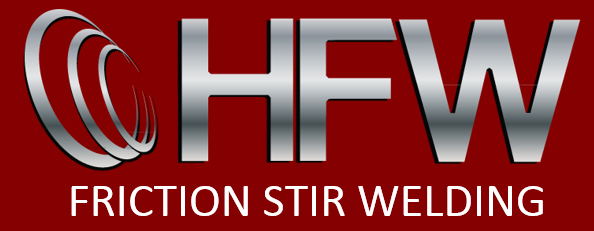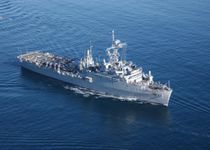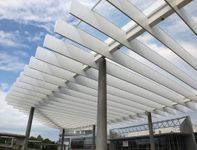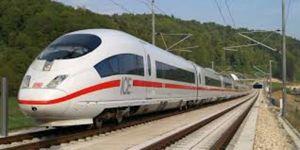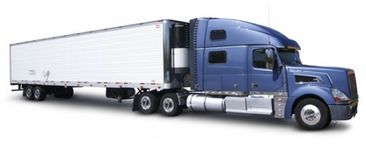Friction Stir Welding
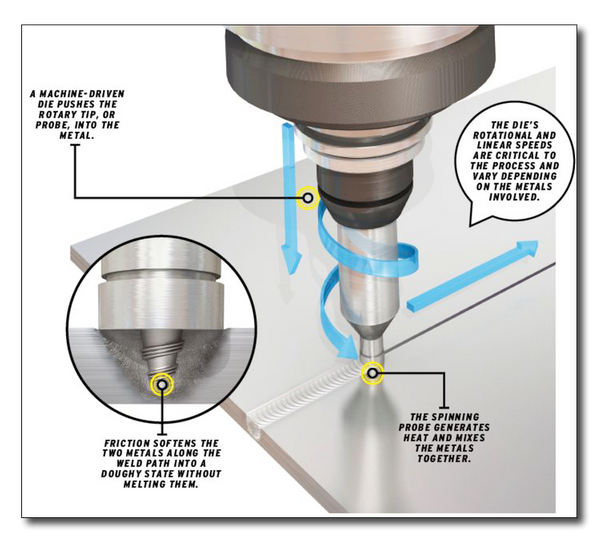
What is Friction Stir Welding
Friction stir welding (FSW) is a solid-state joining process that creates high quality, high strength welds. This produces welds of high quality in materials such as aluminum and copper.
During FSW, heat is generated by a rotating pin tool that creates a plasticized state when it is passed through the material being joined. The rotating tool creates a plasticized state so as the tool is progressed, a continuous joint is created. FSW, like other types of friction welds, is solid state in nature. As a result, friction stir welds are not susceptible to solidification related defect such as porosity or hot cracking, that may hinder fusion welding processes.
Parts can be oriented as butt welds, lap welds, and even fillet welds on highly sophisticated machines, but the most common orientation is butt welds. The rotating tool is then brought into contact with the work pieces. The tool has two basic components: the pin tool, which protrudes from the lower surface of the tool, and the shoulder, which is relatively large diameter. The length of the pin tool is directly correlated to the thickness of the work pieces.
Welding is initiated by first plunging the rotating pin tool into the work pieces until the shoulder is in close contact with the components top surface. Friction heat is generated as the rotating shoulder rubs on the top surface under an applied force. Once sufficient heat is generated and conducted into the work piece, the rotating tool is propelled forward. Material is softened by the heating action of the shoulder, and transported by the pin tool across the bondline, facilitating the joint. Friction stir welding is fast becoming the process of choice for welding.
Benefits
- Joins Wide Variety of Materials
- High Strength Joints/High Toughness
- Localized Processing Capabilities
- Low Heat Input/Low Distortion
Considerations
- Part Accessibility is Required
- Process Forces Require Ample Fixturing
- Localized Material Temper Disruption
Equipment for friction stir welding includes:
- Friction Stir Welding Machine: This is the most important piece of equipment used in friction stir welding. It consists of a rotating spindle that holds the tool, a motor that drives the spindle, and a mechanism for applying force to the tool. The machine is designed to provide precise control over the speed, rotation, and axial force applied to the tool.
- Friction Stir Welding Pin Tool: This is the tool that is used to generate the heat and plastic deformation necessary for welding. The tool consists of a shoulder and a pin, both of which are made from a high-strength, wear-resistant material such as tool steel.
- Workholding Fixtures: Friction stir welding requires the material being welded to be held in place, usually with the use of workholding fixtures. These fixtures can range from simple clamps to more complex, custom-made setups that are designed to accommodate the specific geometry of the part being welded.
One of the key advantages of FSW is that it can be performed using customized computer numerical control (CNC) machines. When using a CNC machine for FSW, the machine is programmed with the desired welding parameters, such as tool rotation speed, travel speed, and vertical axial load. This allows for a high level of repeatability and consistency. CNC machines can be programmed to perform the same welding process multiple times, ensuring that the final product is of consistent quality. Additionally, CNC machines can be programmed to adjust the welding parameters in real-time based on feedback, allowing for consistent welding performance.
Design for Manufacturability in Friction Stir Welding: 7 Essential Principles for Efficiency and Quality
Design for manufacturability (DFM) is a critical factor in the successful implementation of friction stir welding (FSW) applications. FSW is a solid-state welding process that produces high-quality, defect-free welds in a wide range of materials. However, to fully realize the benefits of FSW, it is essential to design products that can be effectively and efficiently manufactured using this process.
To achieve this, FSW-based product design typically involves the following principles:
- Design Simplicity: FSW-based products should be designed with simplicity in mind by reducing the complexity of the FSW paths and using the simplest geometry possible in and near the weld zone. At times it may be necessary to increase the number of parts in the welded assembly in order to maintain or enhance the simplicity of the design. This approach, of keeping the FSW tool paths as simple as practical, can help minimize technical hurdles and complexity of the FSW process and decrease the likelihood of errors or defects, this, in turn will increase the efficiency of production.
- Standardization: FSW-based products should be designed with standardized geometry in and near the weld joint wherever possible. This can further reduce the technical hurdles and complexity of the FSW process. Standardization can also facilitate more rapid production qualification as the reuse of prior qualified processes can lead to further cost savings and efficiency gains.
- Design for weld assembly, fixturing and welding constraint: FSW-based products should be designed with ease of fixturing in mind. This means that components should be designed to be easily fit together and constrained in preparation for the friction stir welding process. It is also desirable to error proof the setup and fixturing process so costly mistakes in setup and welding can be avoided. Reduction of mistakes can be further aided by having clear and concise assembly instructions. Designing for weld assembly, fixturing and welding process constraint can help to reduce assembly time, improve product quality, and reduce the likelihood of errors or defects.
- Minimize Material Waste: FSW-based products should be designed with materials and processes that minimize waste and environmental impact. This can involve the use of recycled materials, the reduction of packaging, and the adoption of environmentally-friendly manufacturing processes. Minimizing waste can help to reduce manufacturing costs, improve environmental sustainability, and enhance the reputation of the company.
- Design for Testability: FSW-based products should be designed with testing and inspection in mind. Friction stir welding is classified as a special process and thus process control, non-destructive evaluation and functional testing must be considered in the design process. Doing this will allow for easy testing and verification of quality during the manufacturing process and can help to reduce the time and cost of testing, improve product quality, and increase customer satisfaction.
- Design for Robustness: FSW-based products should be designed to withstand the rigors of the manufacturing process and the environment in which they will be used. This can involve the use of robust materials and components, as well as the incorporation of features that can mitigate the impact of environmental factors such as temperature, humidity, and vibration. Design for robustness can help to reduce the likelihood of errors or defects, increase product reliability, and enhance customer satisfaction.
- Design for Cost: FSW-based products should be designed with cost in mind, using the most cost-effective materials and manufacturing processes and following the suggestions above. This can involve the use of value engineering techniques, such as cost-benefit analysis, to identify areas where cost savings can be made without compromising product quality or performance. Design for cost can help to reduce manufacturing costs, increase profit margins, and improve the competitiveness of the product in the marketplace.
In summary, DFM is an essential aspect of designing products for FSW applications. By following the principles of DFM, product designers and engineers can create products that are manufacturable, cost-effective, and high-quality. This can help to reduce the time and cost of manufacturing, increase product reliability and performance, and improve the overall customer experience.
Ability to monitor all critical FSW parameters • Statistical Process Control features
HFW Solutions Friction Stir Welding Capabilities
HFW Solutions has over 20 years experience welding parts across many different industries including aerospace, hybrid electric vehicle, marine, rail, and thermal management. HFW is the premier friction stir welding service provider in North America. Our machines are state of the art and our weld engineers are experts in their craft.
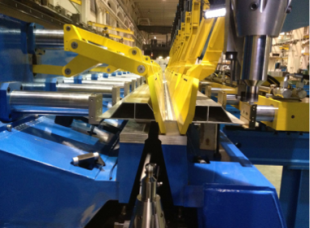
Superior Mechanical Characteristics
Friction Stir Welding (FSW) is a solid state process meaning that no melting takes places. FSW, in general, produces joints with superior mechanical characteristics, such as strength and toughness, than a traditional fusion weld joint. HFW’s engineering team develops and tests each weld process to ensure good weld quality.
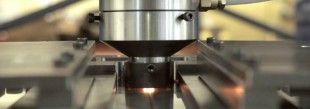
Joining Disimilar Materials
FSW allows material that are incompatible to be combined by conventional methods to be joined. Different alloys and even different metals can be joined together. Each combination of materials requires a different weld process. HFW’s expertise in FSW allows for a wider variety of material to be joined than our competitors. To learn more about which materials can be joined using FSW, visit our Material Compatibilities page.
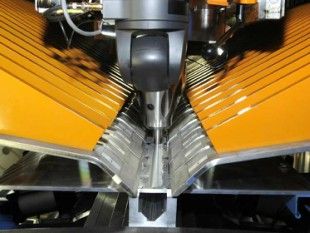
Dual Head Welding Capability
Many of HFW’s friction stir welding machines are equipped with upper and lower weld heads. This is especially advantageous when welding hollow extrusions. For assemblies requiring welds on two sides, this increases productivity allowing us to get more finished parts out the door.
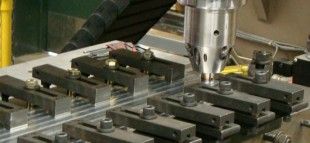
Defect Free Bonds
HFW’s special attention to pre-weld joint preparation contribute to a virtually defect free weld joint retaining many characteristics of the parent metal.
